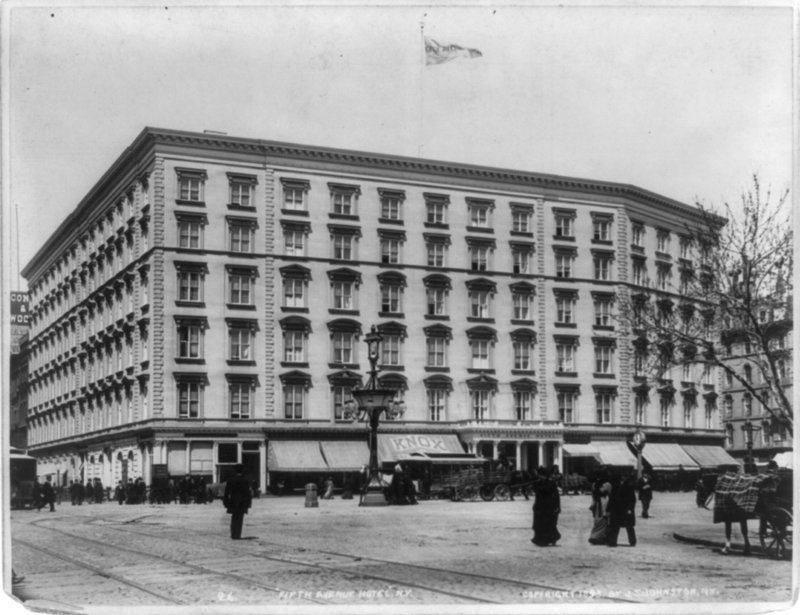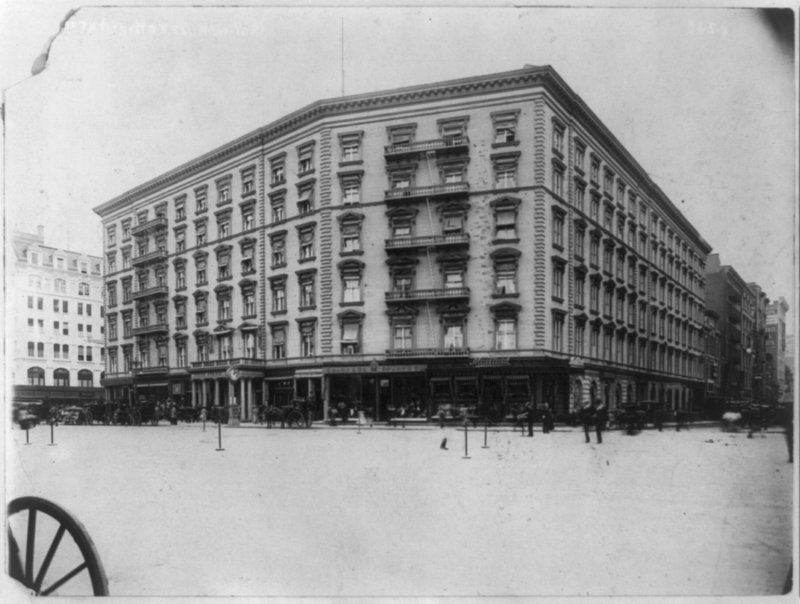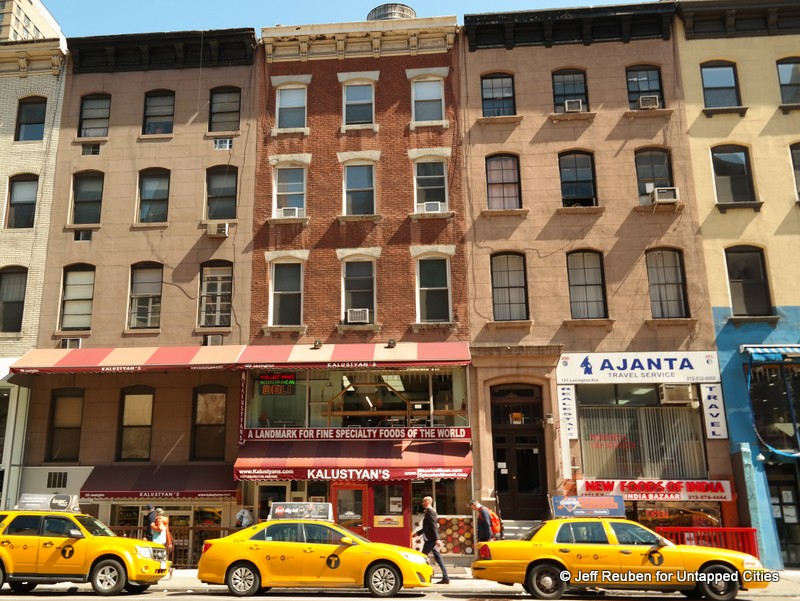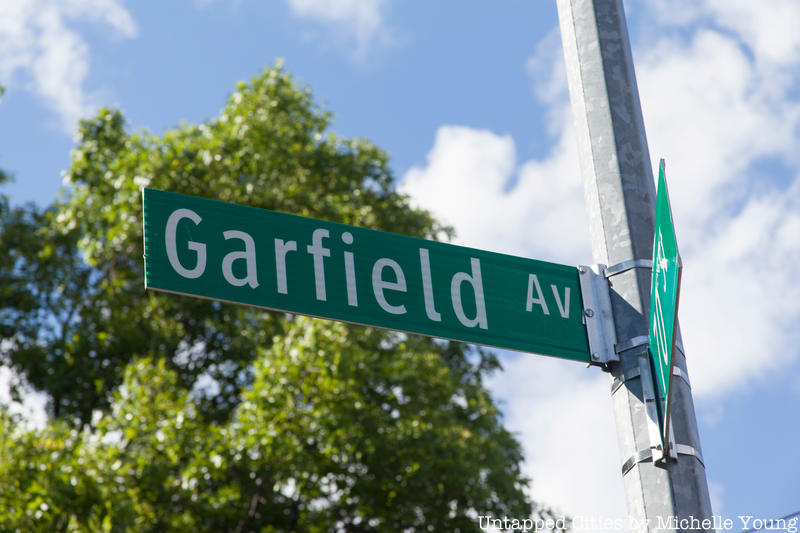PBS recently broadcast Murder of a President, an episode of American Experience that focuses on James Garfield, the second American President to be assassinated and the fourth president to die in office. Garfield rose through the ranks from Civil War General to Congressman to President.
Presented below are some of the New York City sites depicted in Murder of a President and associated with Garfield’s Presidency, though he has few formal memorials or dedications here.
1. The Making of an Assassin
On July 11, 1880, the SS Narragansett and the SS Stonington collided on Long Island Sound. The crash and sinking of these ships would not be particularly noteworthy over one hundred and thirty years later except that one of the passengers on the SS Stonington was Charles Julius Guiteau. Guiteau did not amount to much in his early life, but it was the disaster on the Stonington that sent Guiteau on his path toward becoming an assassin as you will see later in this story. Before this, he worked as an attorney and argued a few cases, even making it into The New York Times over a fee dispute and spent some time living in the utopian community at Oneida.
2. The Fifth Avenue Summit at the Fifth Avenue Hotel
 Photo from Library of Congress
Photo from Library of Congress
On August 6, 1880, President-elect James Garfield gave his only campaign speech from the balcony of the Fifth Avenue Hotel to an audience of around 10,000 gathered in Madison Square Park. In addition to Garfield, General Chester A. Arthur, General Benjamin Harrison, and Major William McKinley all gave speeches as well. It must have been quite the sight to hear speeches from four future presidents. During the course of the summit, Garfield met with his political adversaries, the Stalwarts, led by Roscoe Conkling.
The Fifth Avenue Hotel was one of the grandest hotels in New York City. The land was originally part of Matthew Horn’s farm. By the 1830s when Fifth Avenue cut through the land, the farm gave way to the Madison Cottage, which charged six pence for supper and forbade more than five men from sleeping in one bed. In the 1850s, the Madison Cottage was demolished for Franconi’s Hippodrome, which in turn was replaced by the Fifth Avenue Hotel in 1859. The Fifth Avenue Hotel played host to a bevy of foreign dignitaries including, the Prince of Wales, in 1860, Done Pedro, the last emperor of Brazil, the Crown Prince of Siam, and Prince Napoleon. The Fifth Avenue Hotel was also demolished, replaced by the International Toy Center Building, which is now home to Eataly.
3. Frederick Douglass’ Cooper Union Endorsement
 Photo by Amy Cools for Untapped Cities
Photo by Amy Cools for Untapped Cities
Of the notable events that have taken place in Cooper Union’s Great Hall, one of the most famous is the speech Abraham Lincoln gave there on February 27th, 1860. It was a speech that cemented Lincoln as a Presidential contender and ensured that the Great Hall would become an important venue. Twenty years after Cooper Union’s Great Hall helped Lincoln rise to prominence, on October 25, 1880, abolitionist leader Frederick Douglass gave a speech to an overflow crowd declaring that “James Garfield must be our President.” On March 4, 1881, Frederick Douglass led Garfield to his inauguration demonstrating the importance of Douglass’ support and endorsement.
Next check out our trip inside of Cooper Union’s clocktower.
4. Assassination Conspiracy at the Fifth Avenue Hotel?
 Photo from Library of Congress
Photo from Library of Congress
July 2, 1881 Charles Guiteau attempted to assassinate President Garfield. Guiteau was quickly apprehended and immediately jotted down a note to General William Tecumseh Sherman.
To General Sherman: I have just shot the President. I shot him several times as I wished him to go as easily as possible. His death was a political necessity. I am a lawyer, theologian, and politician. I am a Stalwart of the Stalwarts. I was with General Grant and the rest of our men, in New York during the canvass. I am going to the Jail. Please order out your troops, and take possession of the jail at once. Very respectfully, Charles Guiteau.
Guiteau’s assurance that he performed this act for the Stalwarts and his statements that “Arthur will be President” led many to question whether Vice President Arthur or his Stalwart mentor Roscoe Conkling were involved in a conspiracy to rid the country of their opposition. Arthur and Conkling were mobbed on their way into the hotel as suspicion fell on them and New Yorkers assumed that played a role in some nefarious plot.
5. Roscoe Conkling’s Untimely Death in the Great White Hurricane of 1888
After Conkling fell out with Arthur over Civil Service reform, he went back to practicing law in New York City. On Monday March 12, 1888, Roscoe Conkling left his office and headed home for the final time. Due to the weather, Conkling hailed a cab to reach his destination at the Hoffman House on Madison Square and Twenty-Fifth Street. To Conkling’s chagrin, the cabbie demanded fifty dollars. Rather than pay the exorbitant fare, Conkling decided to walk the two and one half miles back to his home. When he reached Union Square, he took an ill advised short cut through the Park. There, he fell into a snowbank and was buried up to his armpits.
After twenty minutes, Conkling managed to free himself and make it to the front door of the New York Club, mere feet from his intended destination, where he collapsed. One month later, he died, becoming the Great Blizzard of 1888‘s most famous victim. Five years later, Conkling’s friends petitioned the Mayor and Parks Board to erect a sculpture of him in Union Square Park. Their request was denied because the officials did not believe that Conkling belonged alongside the likes of Washington, Lincoln, and Lafayette. However, they did allow a statue of him to be erected in Madison Square Park.
Next, read more about The Great White Hurricane of 1888.
6. Chester A. Arthur Inaugural site: 123 Lexington Avenue
 123 Lexington Avenue
123 Lexington Avenue
At 12:25 AM on September 20, 1881, Chester A. Arthur was at his home at 123 Lexington Avenue when he received an official telegram. The telegram stated “It becomes our painful duty to inform you of the death of President Garfield and to advise you to take the oath of office as President of the United States without delay.” At 2:15 AM, John R. Brady, a New York Supreme Court justice, swore Arthur in as the twenty-first president of the United States, making him the second president to be sworn in in New York City. (Arthur was sworn in again two days later in Washington D.C.) Unlike almost all other inaugural sites, Arthur’s former residence is still privately owned and except for a street front store, closed to the public. Today, visitors can see a plaque on the building where Arthur was sworn in and later died, on November 18, 1886.
Next, check out other Presidential Sites in New York City.
7. Memorials to President Garfield in New York City

President Garfield is interred in one of the most impressive Presidential tombs (in Ohio), has a city named after him in New Jersey, a park in Chicago, and a statue steps from the United States Capitol Building. However, Garfield has been mostly overlooked in New York City despite his connection to this city. It appears that the only memorials Garfield likely received in New York City were Garfield Street in the Bronx and Garfield Avenue in Queens.
Next, check out NYC’s Presidential haunts from Washington to Lincoln.






